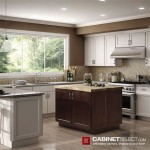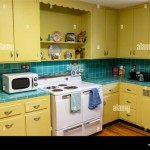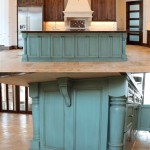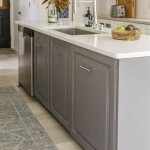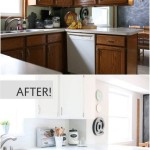Adding Kitchen Cabinet Molding: Essential Aspects
Transforming your kitchen with cabinetry molding can elevate the aesthetics and functionality of your space. Here are essential aspects to consider:
Planning and Design
Begin by sketching the desired molding design. Measure the cabinets precisely to ensure accurate cuts and proper fitting. Select molding profiles that complement your kitchen's style and cabinetry. Consider the height, width, and shape of the molding, as well as the overall flow of the design.
Material Selection
Molding materials range from wood to plastic. Wood molding offers durability and a touch of elegance, while plastic molding is budget-friendly and low-maintenance. Hardwoods like maple, oak, and cherry provide a classic and sophisticated look, while softwoods like pine and cedar are more affordable. Plastic molding, often made of PVC or MDF, is moisture-resistant and suitable for high-humidity areas like kitchens.
Cuts and Installation
Precise cuts are crucial for seamless installation. Use a miter saw for angled cuts and a chop saw for straight cuts. Measure twice, cut once, to avoid any costly mistakes. Secure the molding pieces to the cabinet frames using wood screws or adhesive. Ensure the joints are tight and flush with the cabinet surface.
Finishing Touches
Once the molding is installed, sand any rough edges or uneven surfaces. Apply primer and paint or stain in a color that complements the cabinetry. You may also consider adding embellishments like decorative corner blocks or appliques to enhance the overall effect. For a more polished finish, caulk the joints and fill any gaps to create a seamless transition.
Benefits of Adding Kitchen Cabinet Molding
Kitchen cabinet molding offers numerous benefits:
- Aesthetic Enhancement: Molding frames the cabinets, adding visual interest and enhancing the overall style of the kitchen.
- Protection: Molding provides a protective barrier against wear and tear, preventing damage to the cabinet edges.
- Storage Solutions: Crown molding can be used to create shelves or display areas, expanding the storage capacity of your kitchen.
- Improved Functionality: Molding pieces like toe kicks and drawer fronts improve ergonomics, making the kitchen more comfortable and efficient.
Conclusion
Adding kitchen cabinet molding is a worthwhile investment that can transform the look and feel of your kitchen. By carefully planning, selecting the right materials, cutting and installing with precision, and finishing with attention to detail, you can achieve a stunning and functional space that will be the envy of your guests.

How To Install Crown Molding On Cabinets Young House Love

Adding Moldings To Your Kitchen Cabinets Remodelando La Casa

Diy Kitchen Cabinet Upgrade With Paint And Crown Molding

How To Add Trim And Paint Your Laminate Cabinets

Adding Moldings To Your Kitchen Cabinets Remodelando La Casa

From Drab To Fab Adding Trim Cabinets

From Drab To Fab Adding Trim Cabinets

Adding Height To The Kitchen Cabinets Tempting Thyme

Adding Moldings To Your Kitchen Cabinets Remodelando La Casa

Adding Kitchen Cabinet Moulding To Existing Cupboards Ave
Related Posts

